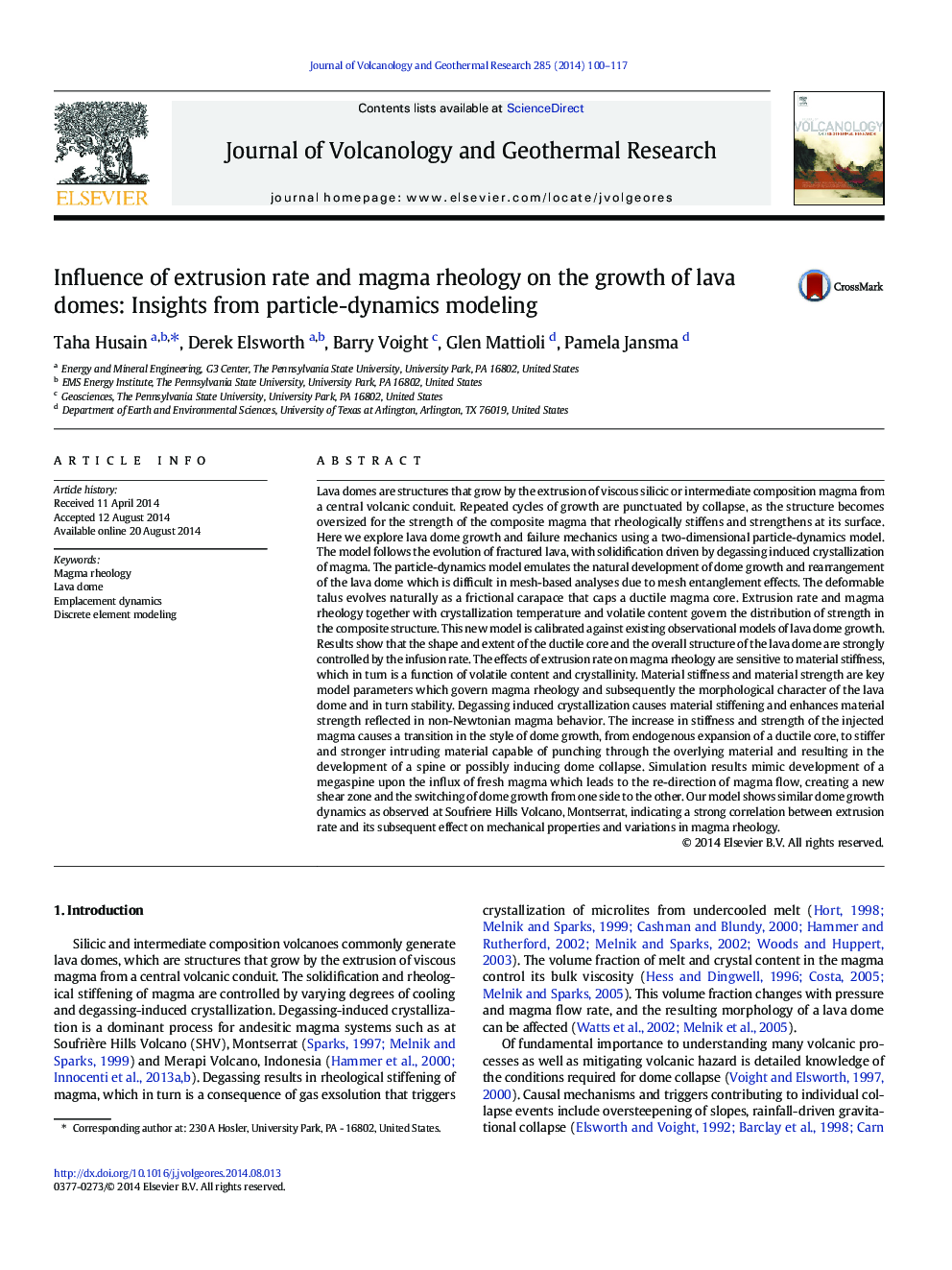| کد مقاله | کد نشریه | سال انتشار | مقاله انگلیسی | نسخه تمام متن |
|---|---|---|---|---|
| 4713056 | 1638337 | 2014 | 18 صفحه PDF | دانلود رایگان |
• Using a purely 2D particle-dynamics model explore the growth mechanics of an evolving synthetic lava dome.
• Provide insight to the mechanics involved during transition from endogenous growth to exogenous growth of a solid lava plug.
• Investigate effect of extrusion rate with variation in material strength and stiffness on morphology of simulated lava dome.
• Provides first order insight to the observed surface textures for intermediate composition magma.
• Model study explains the mechanistic behavior required to produce some of the different observed lava dome morphologies.
Lava domes are structures that grow by the extrusion of viscous silicic or intermediate composition magma from a central volcanic conduit. Repeated cycles of growth are punctuated by collapse, as the structure becomes oversized for the strength of the composite magma that rheologically stiffens and strengthens at its surface. Here we explore lava dome growth and failure mechanics using a two-dimensional particle-dynamics model. The model follows the evolution of fractured lava, with solidification driven by degassing induced crystallization of magma. The particle-dynamics model emulates the natural development of dome growth and rearrangement of the lava dome which is difficult in mesh-based analyses due to mesh entanglement effects. The deformable talus evolves naturally as a frictional carapace that caps a ductile magma core. Extrusion rate and magma rheology together with crystallization temperature and volatile content govern the distribution of strength in the composite structure. This new model is calibrated against existing observational models of lava dome growth. Results show that the shape and extent of the ductile core and the overall structure of the lava dome are strongly controlled by the infusion rate. The effects of extrusion rate on magma rheology are sensitive to material stiffness, which in turn is a function of volatile content and crystallinity. Material stiffness and material strength are key model parameters which govern magma rheology and subsequently the morphological character of the lava dome and in turn stability. Degassing induced crystallization causes material stiffening and enhances material strength reflected in non-Newtonian magma behavior. The increase in stiffness and strength of the injected magma causes a transition in the style of dome growth, from endogenous expansion of a ductile core, to stiffer and stronger intruding material capable of punching through the overlying material and resulting in the development of a spine or possibly inducing dome collapse. Simulation results mimic development of a megaspine upon the influx of fresh magma which leads to the re-direction of magma flow, creating a new shear zone and the switching of dome growth from one side to the other. Our model shows similar dome growth dynamics as observed at Soufriere Hills Volcano, Montserrat, indicating a strong correlation between extrusion rate and its subsequent effect on mechanical properties and variations in magma rheology.
Journal: Journal of Volcanology and Geothermal Research - Volume 285, 15 September 2014, Pages 100–117
